How to pray at each shrine of the Dewa Sanzan
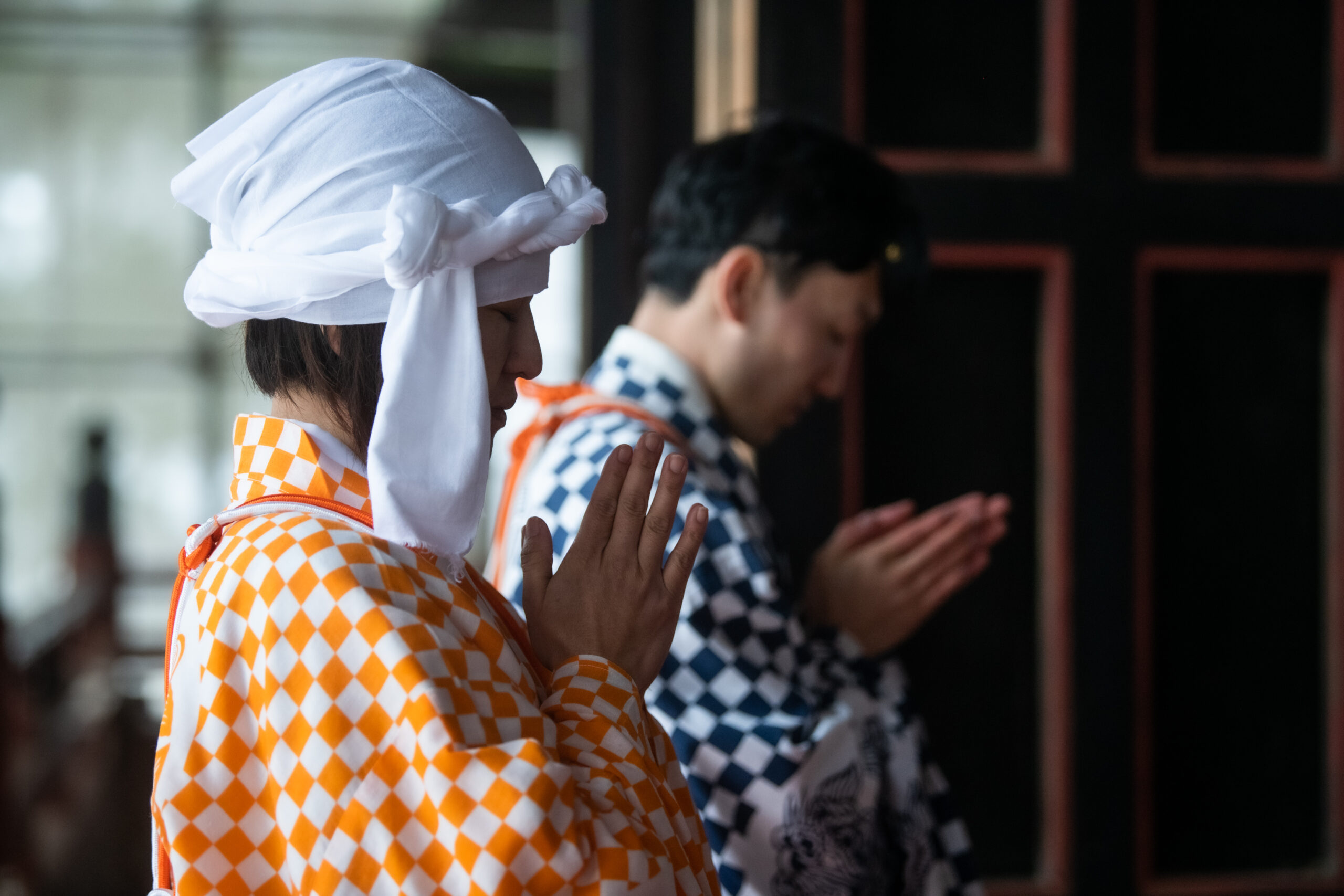
The Dewa Sanzan consists of three sacred mountains, each home to a shrine dedicated to the gods revered there. Each mountain features its own shrine, and the way of praying at each one may vary. In this article, we will introduce how to perform the various types of prayers at the main shrines.
1. The Dewa Sanzan Shrine (Mt. Haguro)
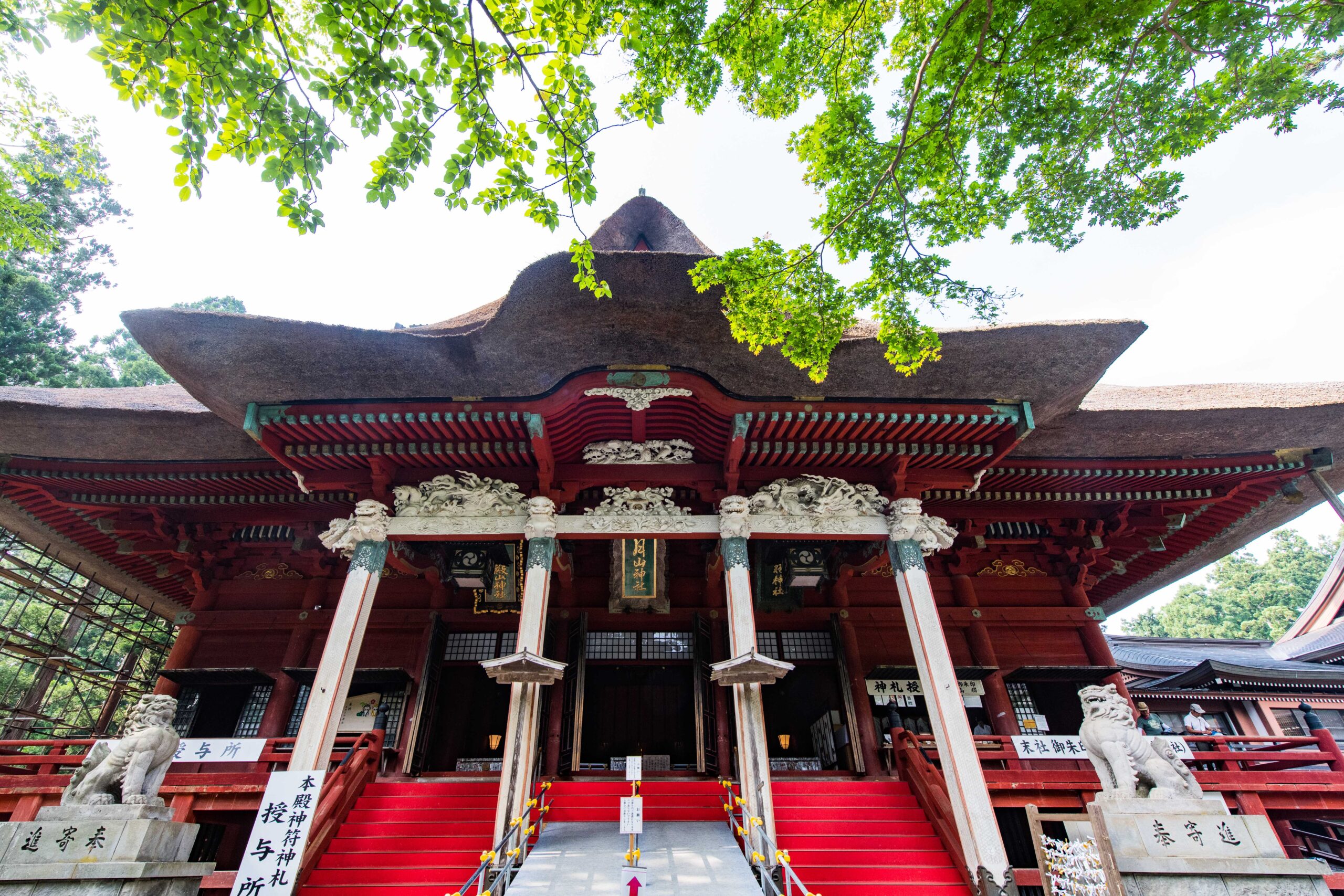
Sanjin Gōsaiden (三神合祭殿), the prayer hall of The Dewa Sanzan Shrine (Dewa Sanzan Jinja 出羽三山神社), is open for worship year-round at the summit of Mt. Haguro. This hall enshrines the deities of Mt. Haguro, Mt. Gassan, and Mt. Yudono, allowing people to pay their respects throughout the year, even when access to the other mountains is not possible.
Reaching the shrine requires approximately 90 minutes on foot via the stone steps from the Zuishinmon Gate (随神門), or just a 5-minute walk from the Haguro Sancho (羽黒山頂) parking lot.
Access by Car
- If you are driving to the summit, you will need to take the Haguro-san Toll Road.
Please check the website of Shonai Kotsu Co., Ltd. for information on toll gate operating hours:
Haguro-san Toll Road | Shonai Kotsu - The road is cleared of snow during the winter, so you can visit by car even in snowy conditions.
However, winter tires are required.
Important Notes for Visitors
- The stone steps can be extremely slippery and dangerous in snowy or bad weather conditions.
- The steps are not cleared of snow, making them impassable during winter.
- During seasons with early sunsets, the descent can become completely dark, so please plan your visit with enough time to return safely.
How to receive the “official prayer” gokitō 御祈祷 at the Dewa Sanzan Shrine
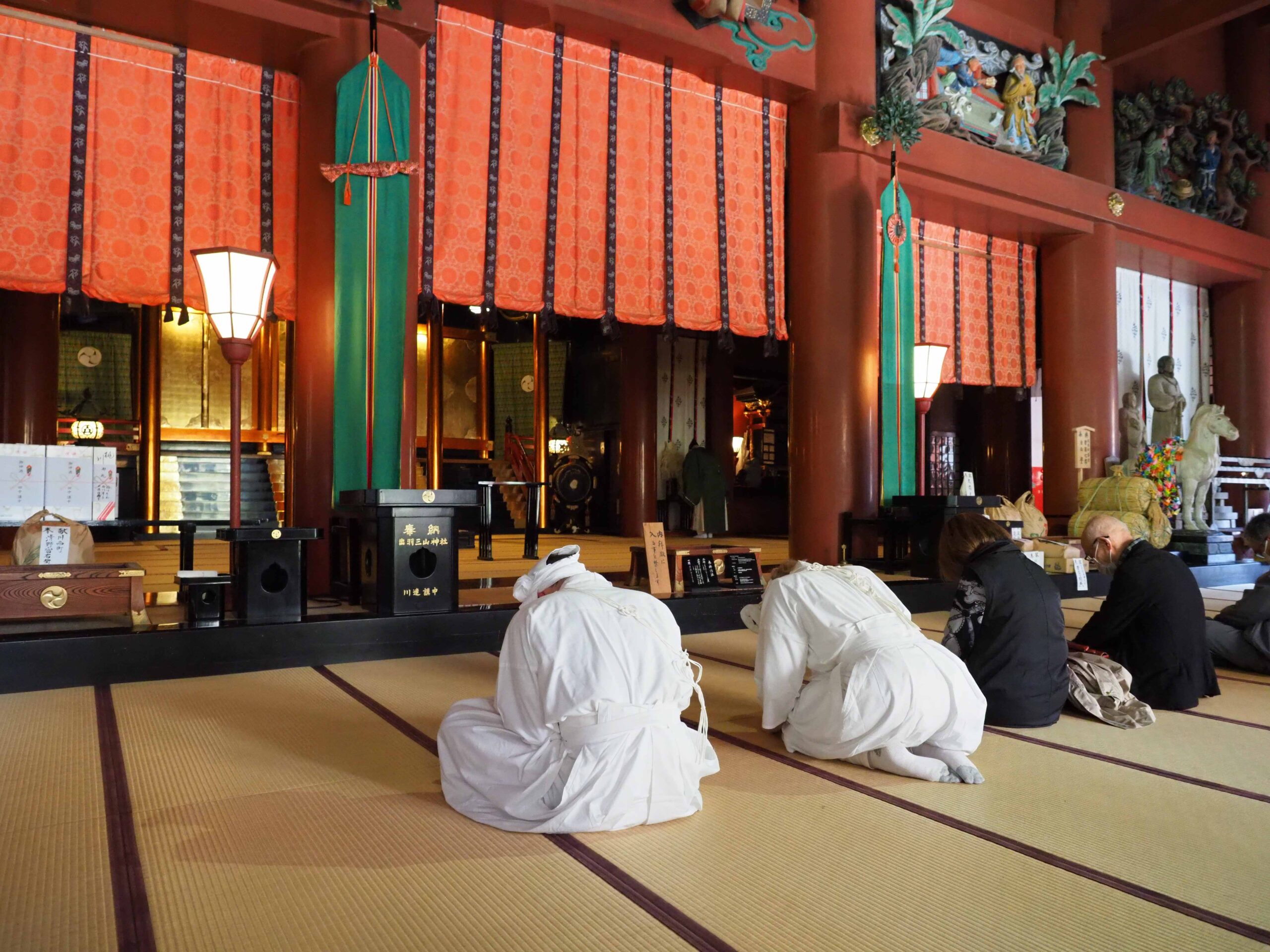
Though you do not need to receive the official prayer to show your devotion and/or your respects to the Dewa Sanzan gods, you can ask to receive the blessings of the Dewa Sanzan shrine priests to officialise your wishes or purify yourself through a “kitō.” A kitō (prayer ceremony) is a formal ritual conducted at a shrine or temple to convey special wishes to the gods or Buddhas. Unlike casual worship, these ceremonies are performed by Shinto priests or Buddhist monks in a structured and solemn manner. They are often held during important life events or to seek blessings for specific concerns, such as warding off misfortune, safe childbirth, or business prosperity.
To do receive a kitō, you will need to ask for the prayer at the Shrine’s office, pay the blessing fees, enter the Sanjingōsaiden prayer hall, and follow the priests instructions.
There are a few commands to remember:
- Goteitō kudasai 御低頭下さい : “please bow your head”. (do so until the priest says the next sentence:)
- Onaori kudasai お直り下さい : “you may lift your head back”
At the end of the prayer, the priests will give you a blessed amulet and a few souvenirs.
Prayer ceremonies are held every hour from 9:00 AM to 4:00 PM.
(9:00, 10:00, 11:00, 12:00, 1:00, 2:00, 3:00, and 4:00 PM [final session]).
Warning: photos inside the Sanjingōsaiden are forbidden.
Shrine Office Hours
Dewa Sanzan Shrine’s Office (inside the Pilgrim Rest Hall “Sanshūden 参集殿”, Mt. Haguro Summit)
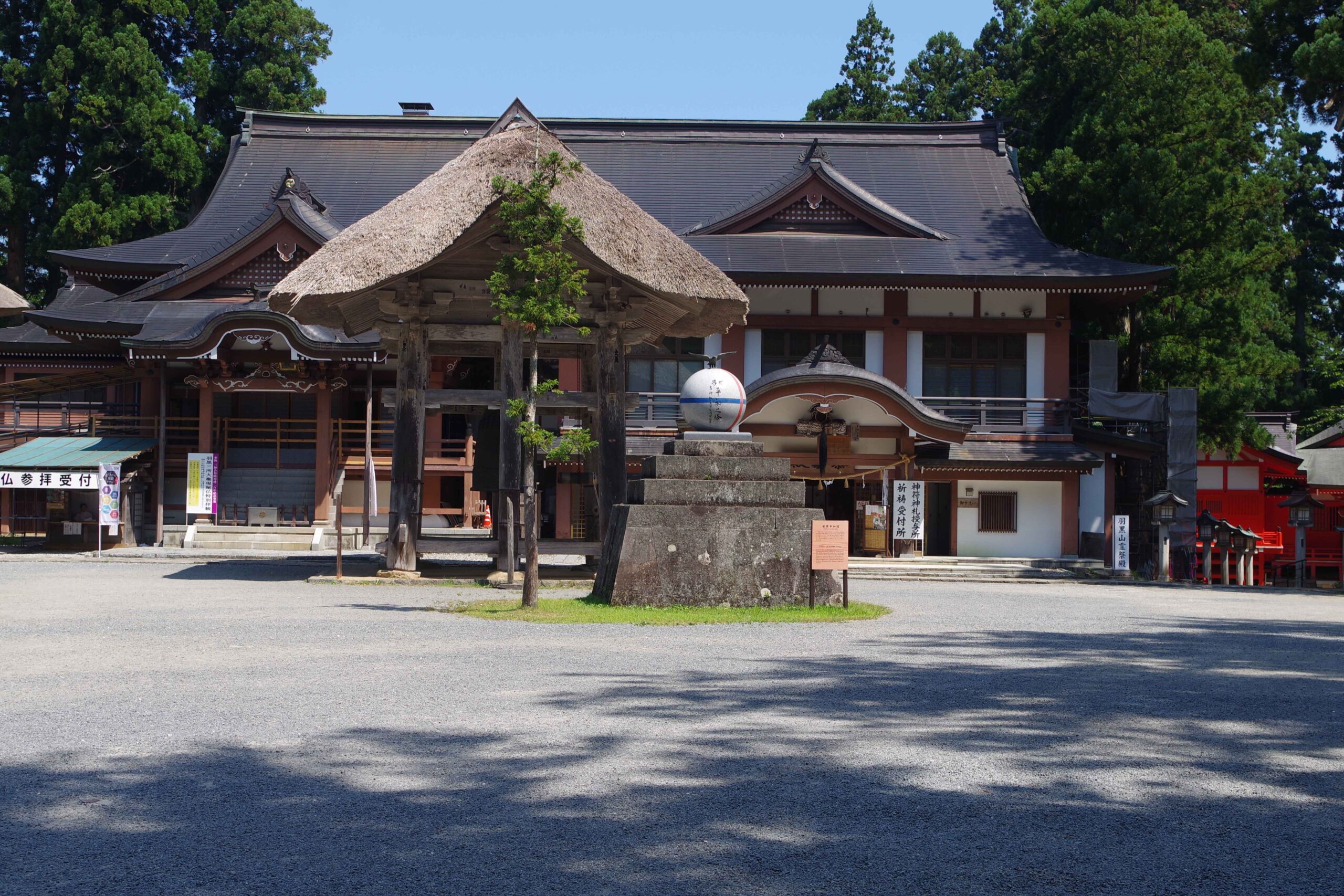
- Amulet and Seal Stamp Office: 8:30 AM – 4:30 PM (approx.)
- Gokitō Prayer Reception: 8:30 AM – 3:45 PM (approx.)
- During festival ceremonies or weddings, prayers cannot be conducted at the main shrine.
- In some cases, you may need to wait for about an hour before your prayer can be performed. If you arrive just before a session starts, you may be asked to wait for the next available session an hour later, so please allow plenty of time.
- Prayer fee: From ¥5,000 per request (your wish and name will be written on a prayer plaque).
For first shrine visits (Hatsumiyamairi) and Shichi-Go-San blessings, the fee starts at ¥7,000 per request. - No reservation is required for individual prayers.
- Please arrive at least 15 minutes before the start time.
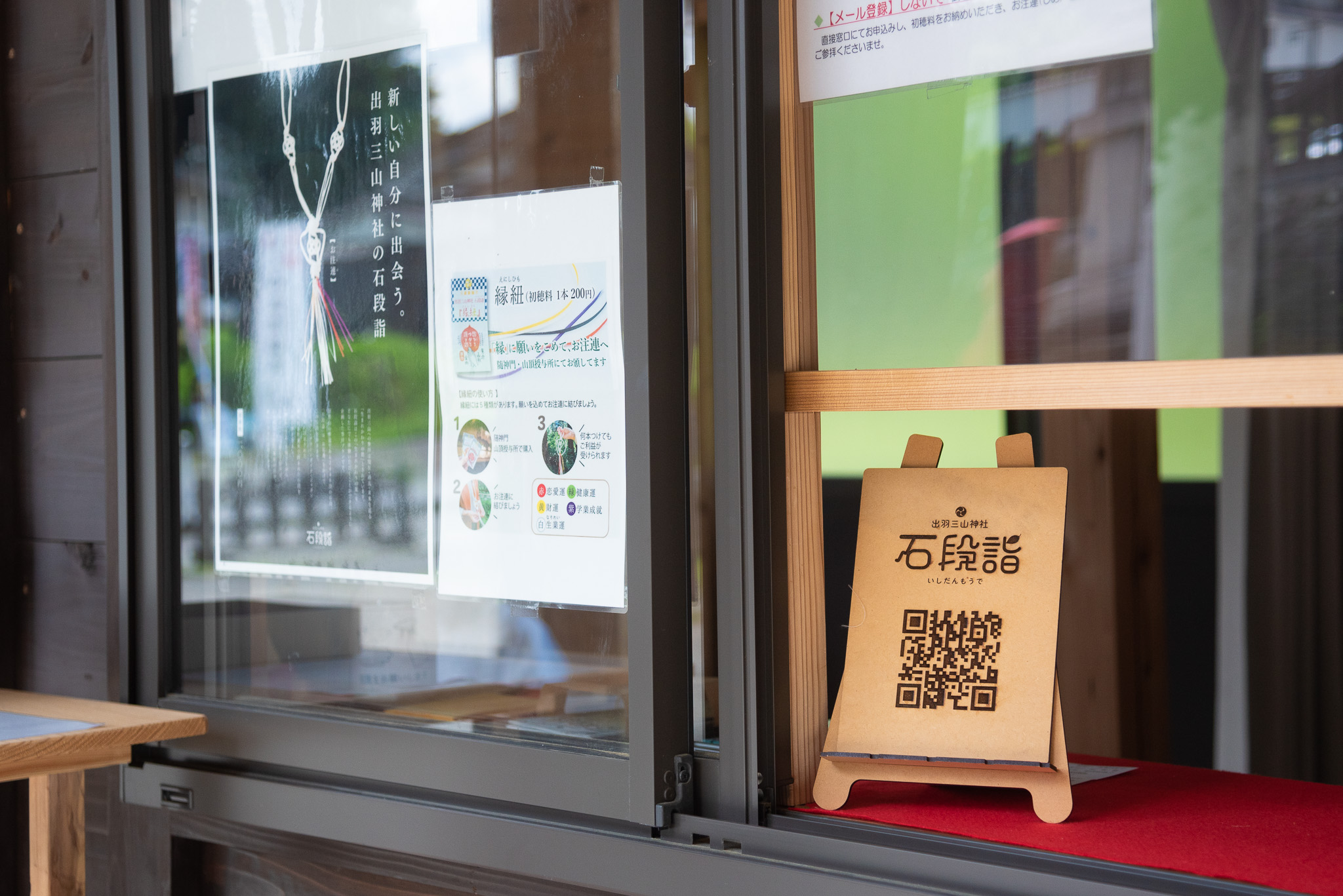
Zuishinmon Shrine Office (Foot of Mt. Haguro)
- Amulet and Seal Stamp Office: 9:00 AM – 4:30 PM (approx.)
- Oshime 御注連 protective necklace : 1000 yen each
2. On Mt. Gassan
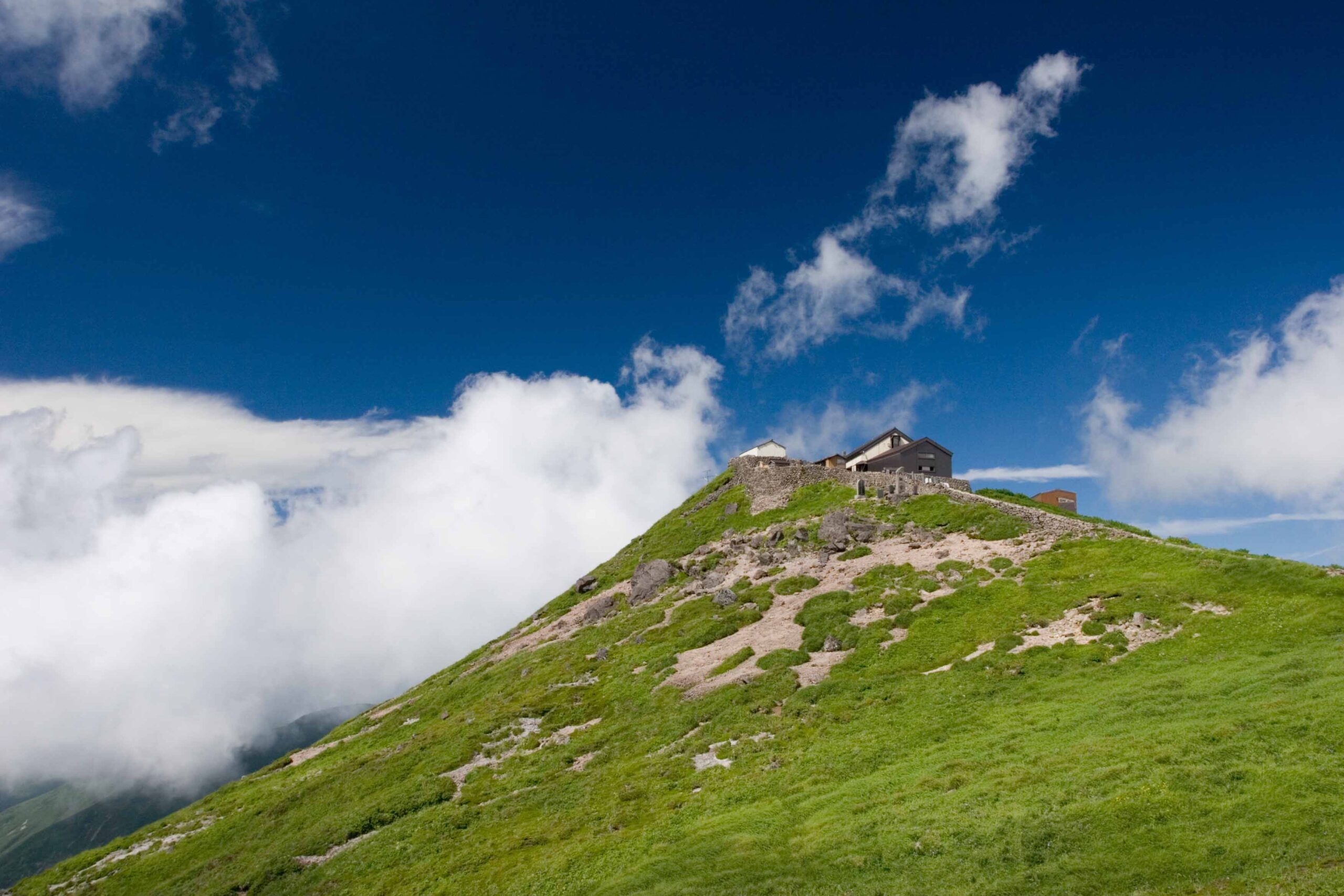
Mt. Gassan’s Official Open Season starts from July 1st and ends on September 15th. Past those dates, it is impossible to pray at the following locations:
Mt. Gassan “Nakanomiya” Midahara Shrine 中之宮の御田原神社
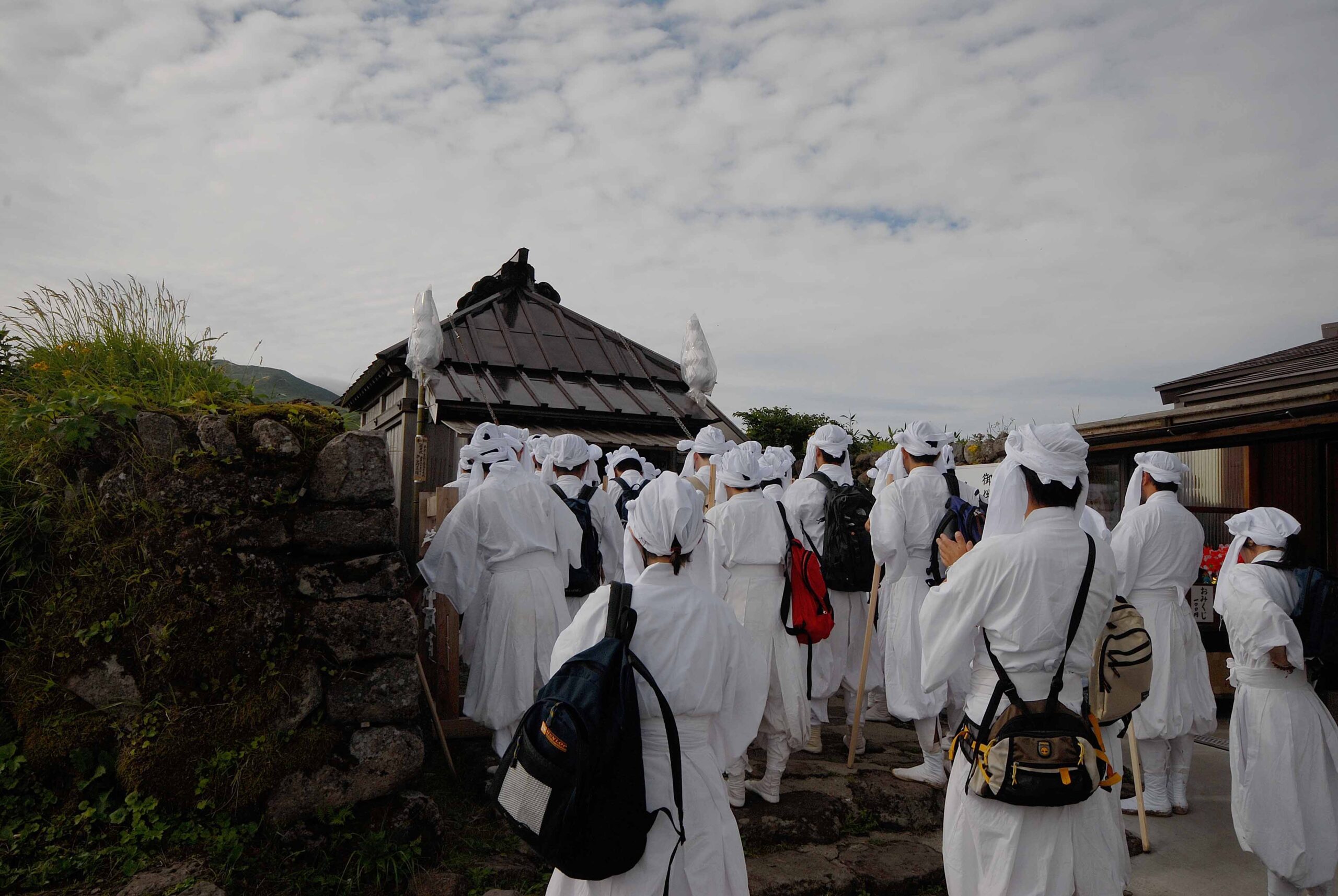
- Opening period for 2024 (Reiwa 6): July 1 (Monday) – September 23 (Monday)
Prayers and memorial services are available from 8:00 AM to 4:00 PM. - Phone: +8190-2367-9037 (Available only during the opening period)
- Location: A 10-minute walk from the Mt. Gassan 8th station parking lot
Note: Accommodation services are currently suspended.
Mt. Gassan Shrine Main Shrine
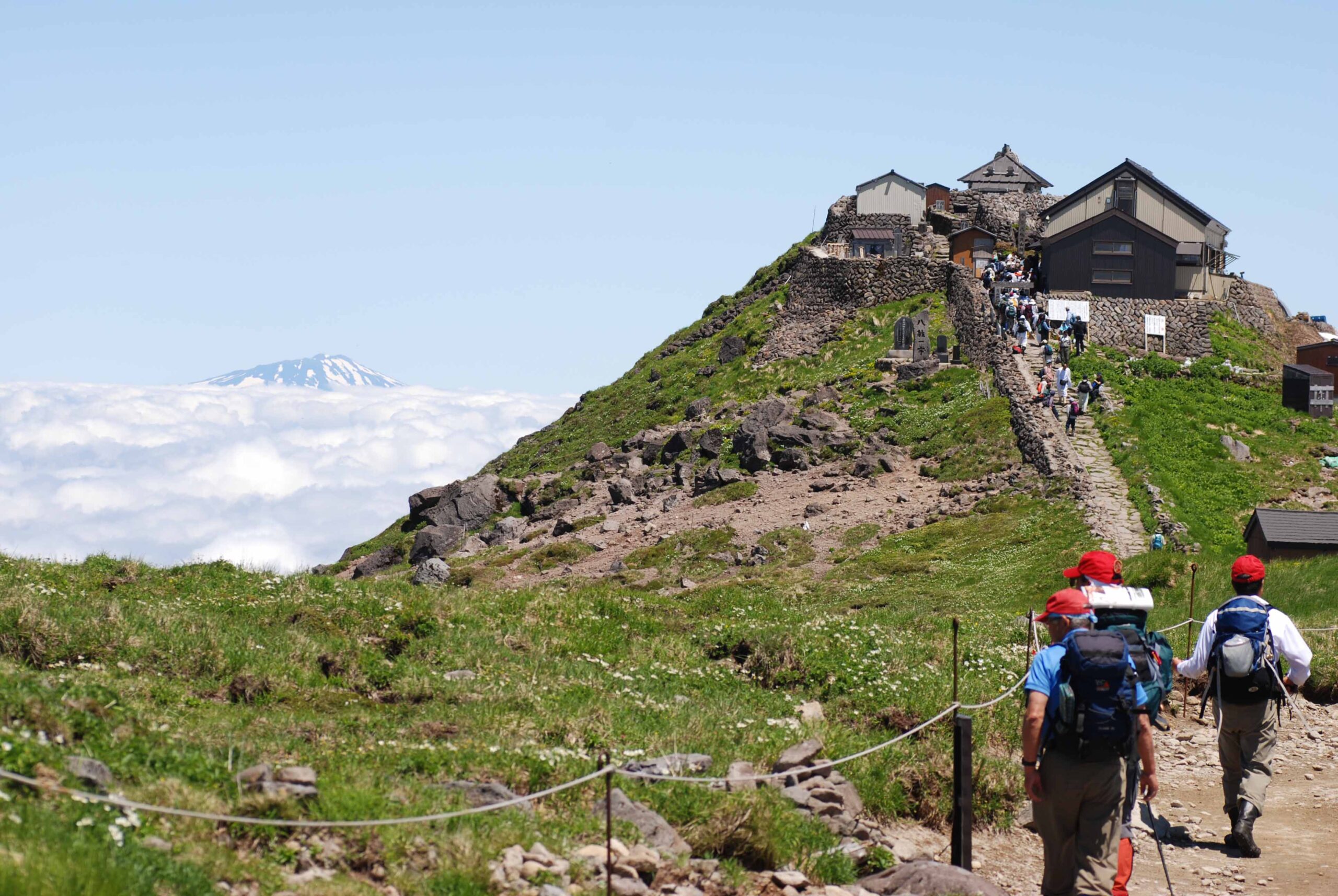
Opening Period
- Mt. Gassan Shrine Main Shrine Opening Period (as of 2024): July 1 – September 15
- Rest Areas for Mt. Gassan Pilgrims: Mountain huts are available at the 8th station, 9th station, and the summit of Mt. Gassan. (Reservations required, please confirm in advance)
- Location : Summit of Mt. Gassan
Purification Fee
Note: The purification fees collected from visitors are used to maintain the shrine grounds, including the pilgrim paths, and the facilities at the summit of Mt. Gassan (such as rest areas and toilets).
- 1 person: 500 yen
(To worship at Mt. Gassan Shrine Main Shrine, you must undergo purification) - Phone:+8190-8921-9151 (Mt. Gassan Shrine Main Shrine) Available only during the opening period
- Fax: +8120-4662-7036
Gokitō Prayers
- 1 prayer: Starting from 5,000 yen (A prayer slip will include your wish and name
- Outside of the opening period, please contact +81235-62-2355 (the Dewa Sanzan Shrine).
3. On Mt. Yudono
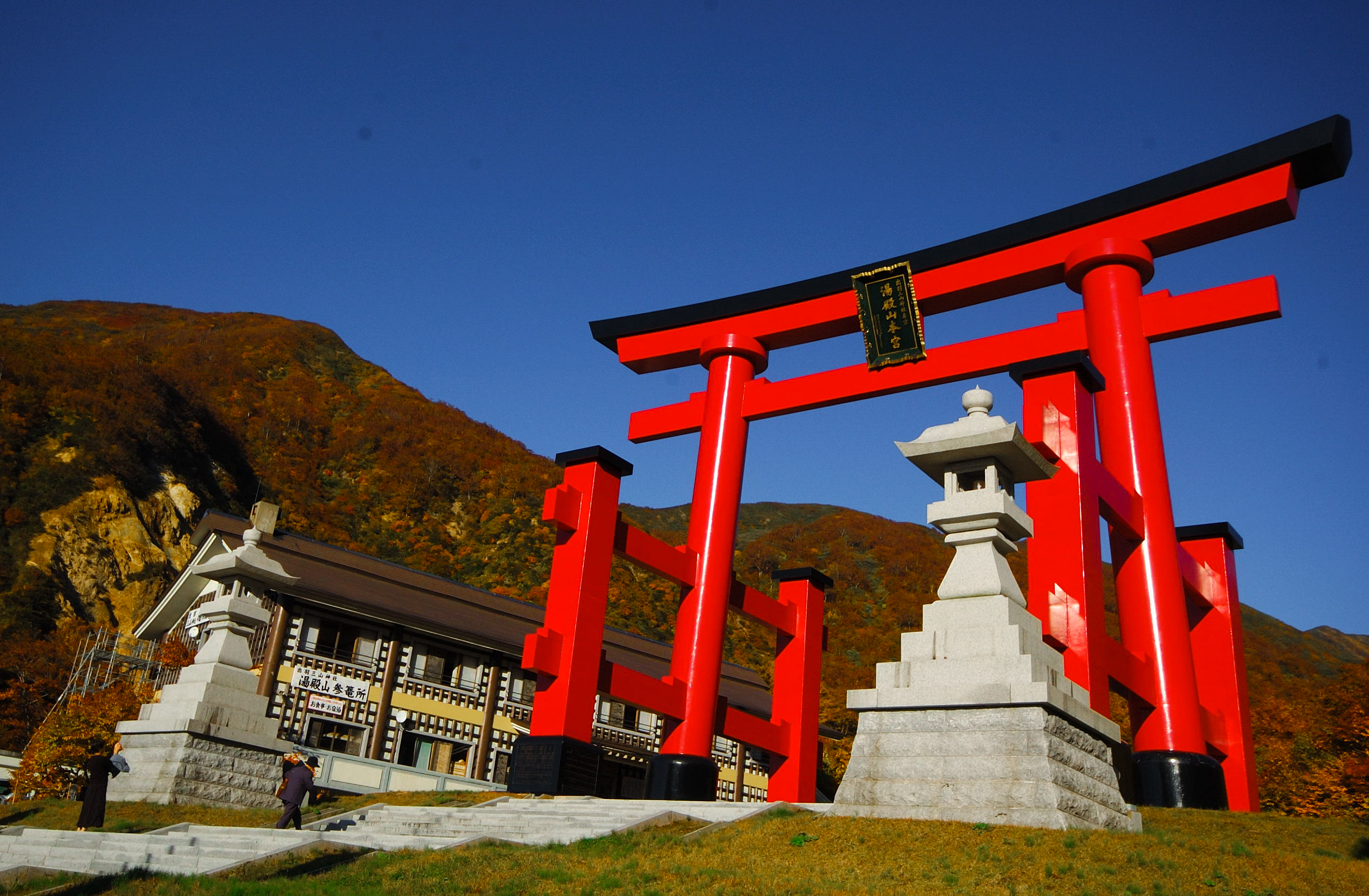
Mt. Yudono’s Official Open Season starts from June 1st and ends on November 3rd. It is impossible to request a prayer outside those dates.
Yudonosan Shrine Main Shrine
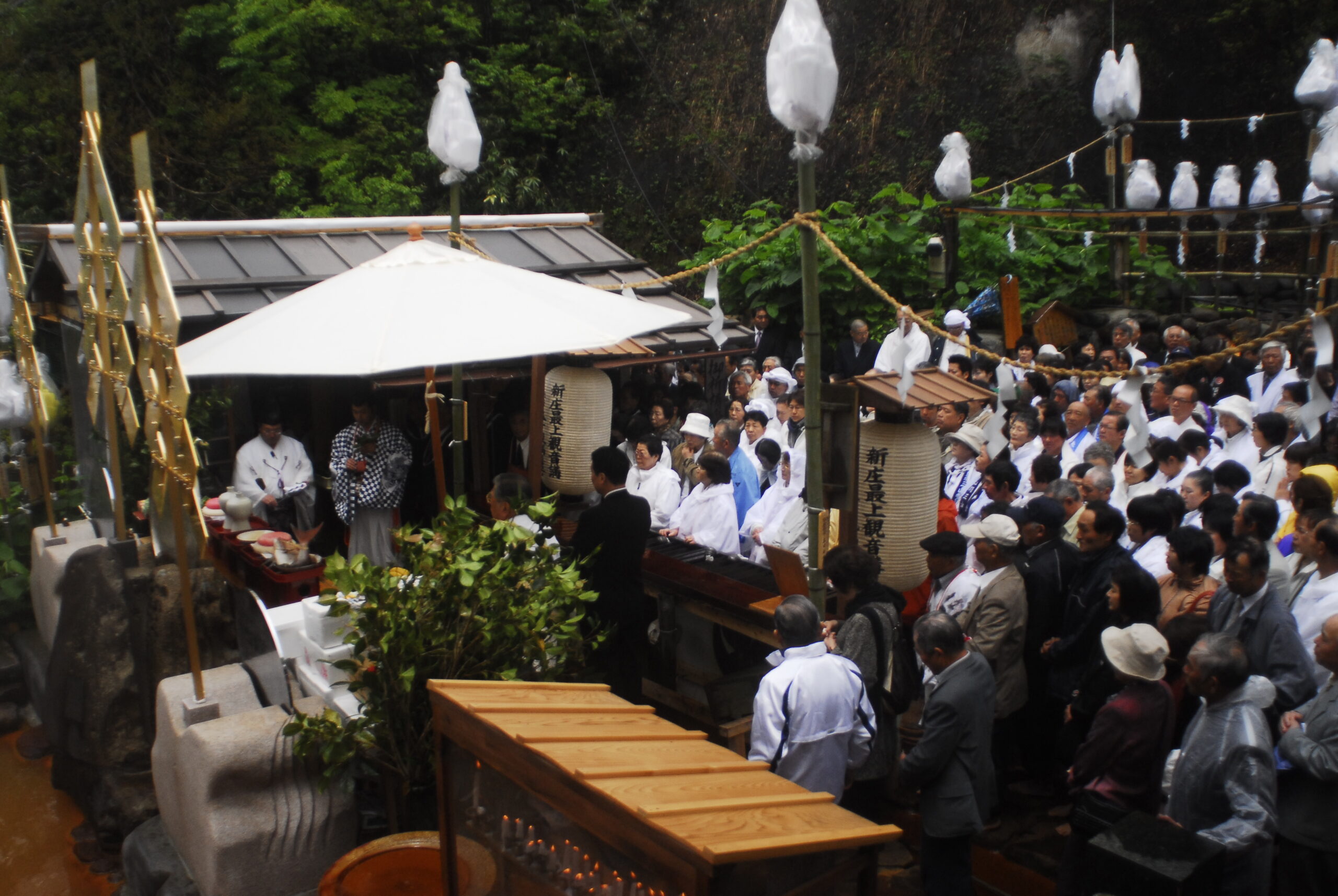
Opening Period
- Yudonosan Shrine Main Shrine Opening Period (As of 2024): June 1 – November 3 until noon (Closed during the snow season)
- Yudonosan Toll Road Gate Reception Hours
June 1 – July 12 and August 26 – November 2 : 8:30 AM – 3:50 PM
July 13 – August 25 : 8:15 AM – 4:20 PM - Closing Festival: November 1st
- On November 3rd, the main shrine will close at 1:00 PM. The Yudonosan Toll Road Entrance Gate will remain open until noon.
For further details on the Yudonosan Toll Road, please refer to the Shonai Kotsu Corporation website:
湯殿山有料道路|庄内交通 (shonaikotsu.jp)
Purification prayer
Visitors must perform a purification prayer before gaining access to the revered deity of Mt. Yudono. Please remove your shoes and socks and place them on the shelves to your right. On your left, pay the purification fee (500 yen) to the priest and follow their instructions. Afterward, you may proceed, still barefoot, to see the revered deity of Mt. Yudono and walk in her divine hot spring.
- 1 person: 500 yen
(To worship the Yudonosan Shrine Main Shrine, you must undergo purification) - Phone: +81235-54-6133 (Yudonosan Shrine Main Shrine) Available only during the opening period
- Fax: +81235-54-6143
Gokitō Prayers
- 1 prayer: Starting from 5,000 yen (A prayer slip will include your wish and name)
For any other inquiries regarding the Yudonosan Shrine Main Shrine, please give a phone call at +81235-54-6133 (Yudonosan Shrine Main Shrine) Only during the opening period.
Outside of the opening period, please contact +81235-62-2355 (Dewa Sanzan Shrine).
Photos AND videos are strictly forbidden at the Yudonosan Main Shrine. Please put your cameras and phones away.
Yudonosan Pilgrim Lodge

- Website: 湯殿山参籠所|株式会社 庄交コーポレーション (shoko-travel.jp)
- Reservation & Accommodation Inquiries: Phone: 0235-54-6219, Fax: 0235-54-6220
- Location: In front of the Yudonosan Parking Lot, at the Great Torii Gate
- Opening Period: June 1 – November 3 (Closed during the snow season)
- Maximum Capacity: Up to 120 people
- Transportation: By car, taxi, etc.
If walking from Senninzawa to Yudonosan Shrine Main Shrine: Approx. 20 minutes
If using the pilgrimage bus from Senninzawa: 5 minutes (One way: 200 yen / Round trip: 300 yen)
How to pay respects to the shrines in the Dewa Sanzan area
Most sacred sites on the Dewa Sanzan are overseen by the Dewa Sanzan Shrine, and follow Shinto rituals for prayer:
❶ Purify yourself by cleansing your hands at the ablution pavilion if there is one available near you
1. Hold the ladle with your right hand and scoop plenty of water to cleanse your left hand (don’t pour everything in one-go, you need to have enough water to perform the following parts without scooping more water).
2. Switch the ladle to your left hand and cleanse your right hand.
3. Once again, hold the ladle with your right hand, use your left hand to catch the water, and rinse your mouth. Do not let the ladle touch your mouth directly.
4. Cleanse your left hand once more.
5. Use the remaining water to clean the handle of the ladle and return it to its original position.
❷ Offering your prayers
1. Bow in front of the offering box.
2. Make your offering in the donation box (a coin with a hole in the center, such as a 5 or 50 yen coin, is believed to be luckiest).
3. Ring the bell (Skip this step if there is no bell).
4. Clap twice, bow twice, pray, and bow once again.
Clothes and outfits
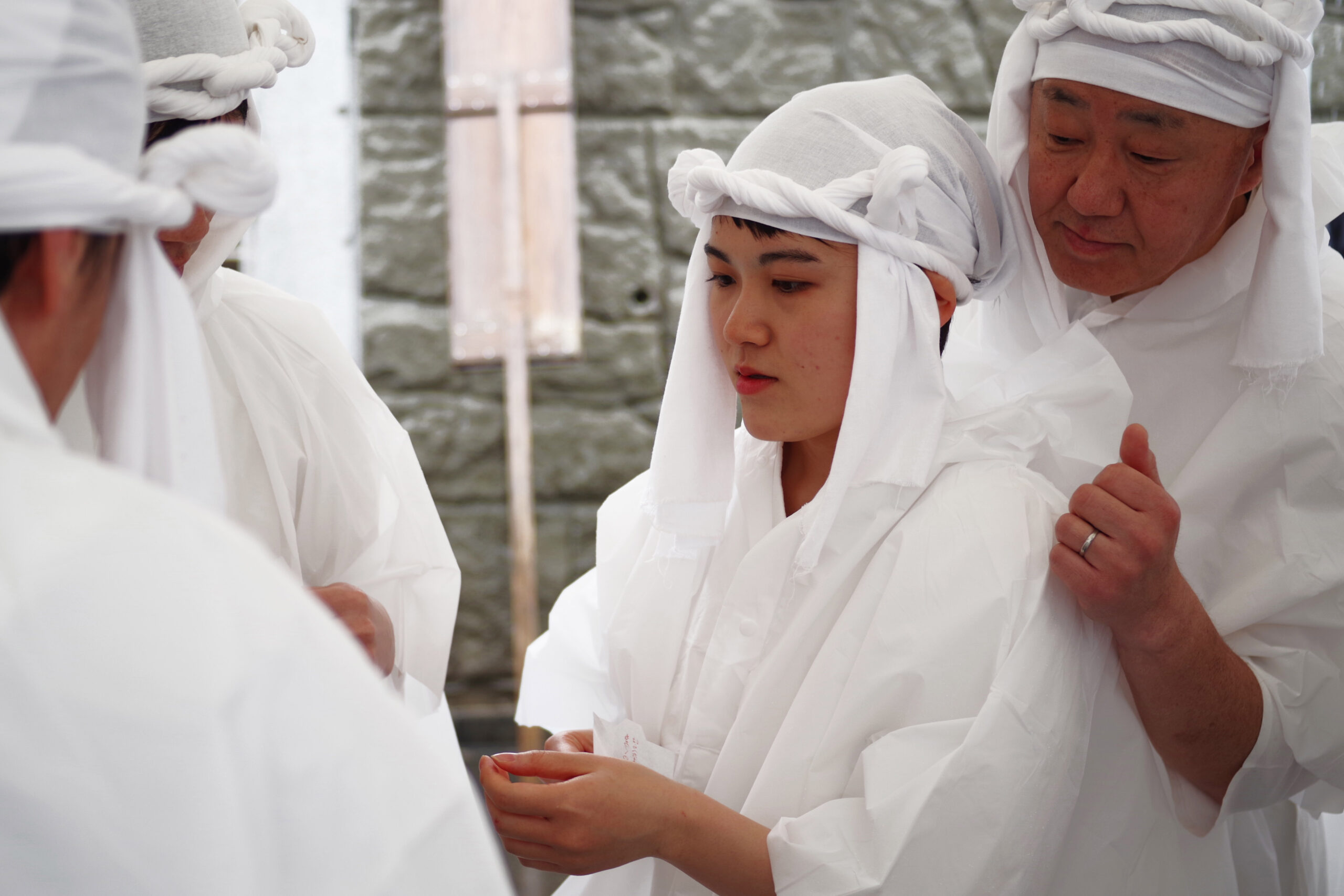
While special pilgrim attire isn’t required, many pilgrims choose to wear white to symbolize spiritual death and rebirth, akin to the white funeral garments (shiroshozoku). If you wish to experience the pilgrimage more traditionally, you can purchase a hakui (white jacket) at the shrine, or simply wear any white clothing of your choice.
- If you prefer casual attire, that’s perfectly acceptable too! Just keep in mind a few general guidelines for visiting temples and shrines in Japan:
- Both men and women should avoid wearing unreasonably revealing clothing.
- It’s respectful to cover your shoulders and chest, especially during prayer.
- During hot weather, it is acceptable to wear short pants, but unreasonably short skirts, short pants or dresses are unappropriate.
- Refrain from wearing clothing with offensive language or imagery.
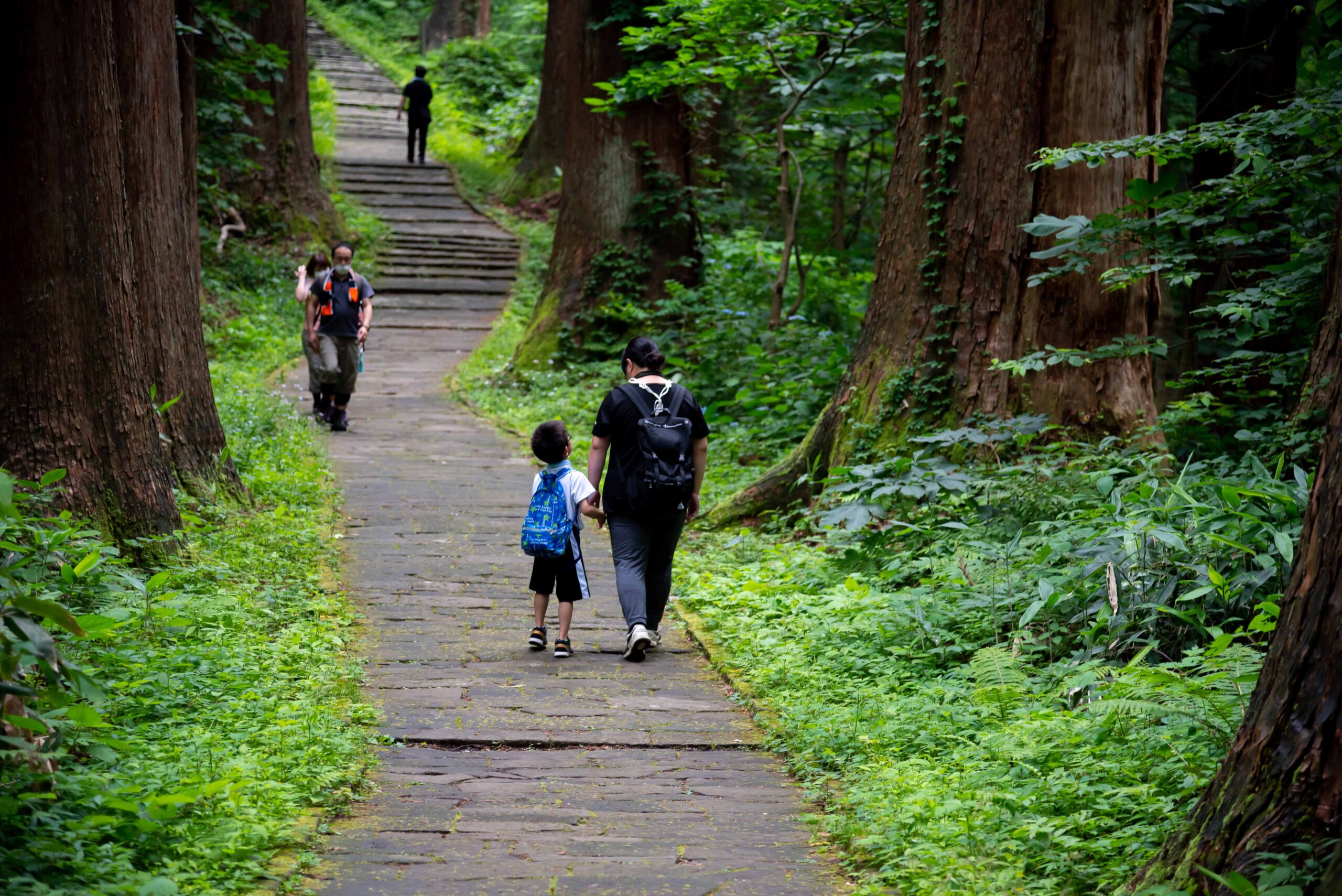
The Dewa Sanzan pilgrim etiquette:
- When visiting the sacred Dewa Sanzan, we kindly ask all guests to follow these important guidelines:
- Show respect for nature, regardless of your personal beliefs or religious background.
- Do not desecrate or disturb sacred objects and places.
- Keep the environment clean and safe by carrying your trash back to your accommodation for proper disposal.
- Help protect local wildlife by not picking plants, removing natural samples, or disturbing animals. Do not introduce foreign species.
- Take care to prevent fires (don’t throw cigarettes ends in nature, do not light fires up where it’s forbidden…).
- Respect areas where photography, filming, or even pointing a camera is prohibited.
- Maintain a peaceful atmosphere by speaking quietly inside temples and shrines.
By honoring these rules, you help preserve the spiritual and natural beauty of Dewa Sanzan for all who visit. Thank you for your cooperation.


